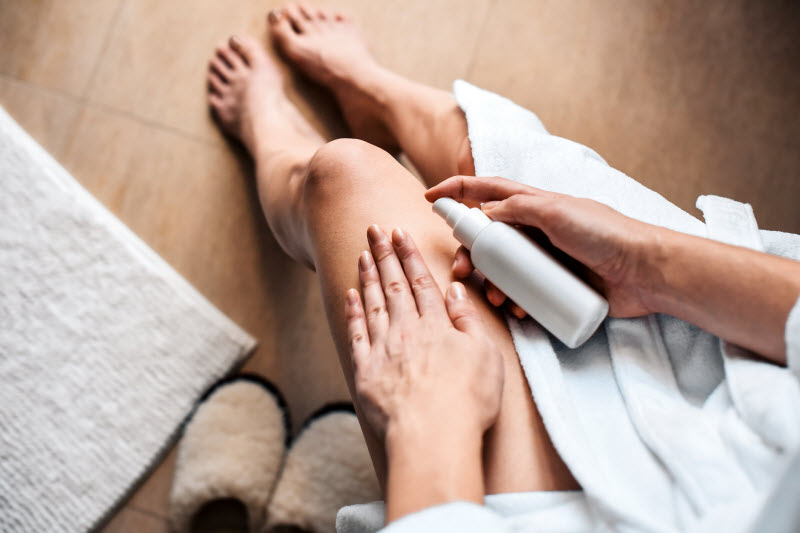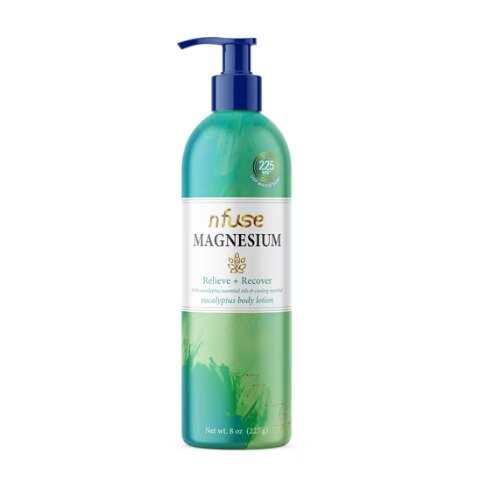Magnesium is frequently referred to as a “mighty mineral” for a reason. Supporting muscle and nerve health, providing bone support and promoting calcium absorption are just a few of its superpowers. Indeed, responsible for more than 300 biochemical reactions in the body, it’s vital to immune and metabolic function.
But while magnesium abounds in a number of delicious foods you may reach for often—such as spinach, pumpkin seeds, dark chocolate and almonds—it’s possible that you’re still not achieving optimal levels.
“Roughly 75 percent of women don’t get enough,” says the director of sports nutrition at UC Davis, Liz Applegate, Ph.D. “If you’re eating less than 1,800 calories a day, avoiding grains, or not loading up on leafy greens, there’s a good chance you’re one of them.”
Further, if you exercise often—and here’s some irony—you may have an even greater need for magnesium. Chronic stress, too much alcohol, poor sleep and eating non-organic foods that are cultivated in mineral-depleted soil may also contribute to less than adequate levels.
A varied, nutritious diet and a magnesium supplement—upon your doctor’s approval—may be your best bet. But as the mighty mineral grows in popularity, more and more forms of it are emerging. And one of the newest? Magnesium oil.
What is magnesium oil?
“Magnesium oil” is a misnomer. Unlike, say, olive oil, it doesn’t contain any oil at all; rather, it’s comprised of magnesium chloride flakes and water, which gives it an oily-like feel. Its form as a liquid allows it to be applied topically, thereby posing the possibility of greater absorption, transmitting the same benefits of a magnesium supplement but through the skin. (Some experts even have an acronym for this: TMT, or Transdermal Magnesium Therapy.) Plus, it can be a boon for a number of health and beauty issues. Here’s what it can potentially help.
What are some magnesium oil benefits?
1. Eases body aches and pains
“Magnesium oil massage” may not be in your vernacular—yet—but it ought to be. We take magnesium baths (or Epsom salt baths) for a reason: Operating as a natural relaxer, magnesium has claimed fame as being one of the best organic ways to alleviate nerve pain, sore muscles and general aches. As a natural antispasmodic, abdominal massage with magnesium oil may also help with menstrual cramps. †
2. Relieves sore muscles
Similarly, “TMT” is gaining acclaim for the relief it might offer in terms of muscle recovery. As mentioned, those who work out—particularly professional athletes—are prone to magnesium loss. Replenishing these levels with magnesium foods, a magnesium oil roll-on or a magnesium supplement facilitates the transportation of other essential nutrients such as calcium and potassium throughout the body, giving muscles both the chance to relax and the fuel they need for peak performance.†
3. May relieve pain related to carpal tunnel syndrome
Affecting more than 8 million people annually, carpal tunnel syndrome is not only prevalent but also despairing, manifesting as numbness, tingling, weakness—and downright pain. According to research out of the National Institutes of Health, magnesium may help provide some relief from its symptoms. This is due to magnesium’s ability to relax the muscular tissue and blood vessels that surround the fragile carpal area. Some choose to spray magnesium oil on their wrists; others opt to use it in a self-massage.†
4. Soothes dry and oily skin
Magnesium-rich foods are synonymous with clearer, brighter skin. Magnesium oil, meanwhile, may help keep skin lubricated and pliable. Furthermore, an NIH study on lipids demonstrated that magnesium oil helps break apart oils and fats, thus leading some to advocate for its capacity to decrease skin oiliness (and the acne that can accompany it). Given magnesium’s ability to foster calm, it may also translate to less stress—and the gorgeous skin that frequently arrives with a peaceful inner life.†
5. Eases pain from fibromyalgia
Impacting nearly 10 million Americans, fibromyalgia is a condition that’s predominately characterized as chronic pain—a health issue that sounds as agonizing as it is. Research out of the NIH has shown that the topical application of magnesium can improve the quality of life of these sufferers, in part by soothing upper and lower limb pain.†
6. May promote healthy sleep
Lavender oil sprayed on pillows might soon be replaced with magnesium oil: Magnesium helps soothe GABA receptors in the brain and nervous system, thereby naturally supporting a better night’s sleep. You can combine the best of both worlds with Life-Flo’s Magnesium Oil Night Spray. Derived from the Zechstein Sea in the Netherlands, this non-greasy, easily-absorbed spray, made from pure magnesium chloride, is infused with lavender to offer you a comfier, sounder slumber.†
DIY Magnesium Oil Recipe
Intrigued by magnesium oil’s potential? While the magnesium oils listed above are terrific options, you can also head to the kitchen and make the serum yourself. To do so, bring ½ cup of distilled water to boil and add it to a half cup of magnesium flakes. Stir well and let cool to room temperature before transferring it to a spray bottle. You can also spice up this basic recipe with your favorite essential oil, whether that’s sweet orange, eucalyptus, or peppermint.
Just be sure you don’t attempt to make magnesium oil with magnesium (Epsom) salts: Magnesium flakes are comprised of magnesium chloride, whereas Epsom salts are made out of magnesium sulfate. And however you’re getting your magnesium, do know that prioritizing this nutrient will put you on the way to becoming as mighty as the mineral itself.
†These statements have not been approved by the Food and Drug Administration. These products are not intended to diagnose, treat, cure or prevent disease.




